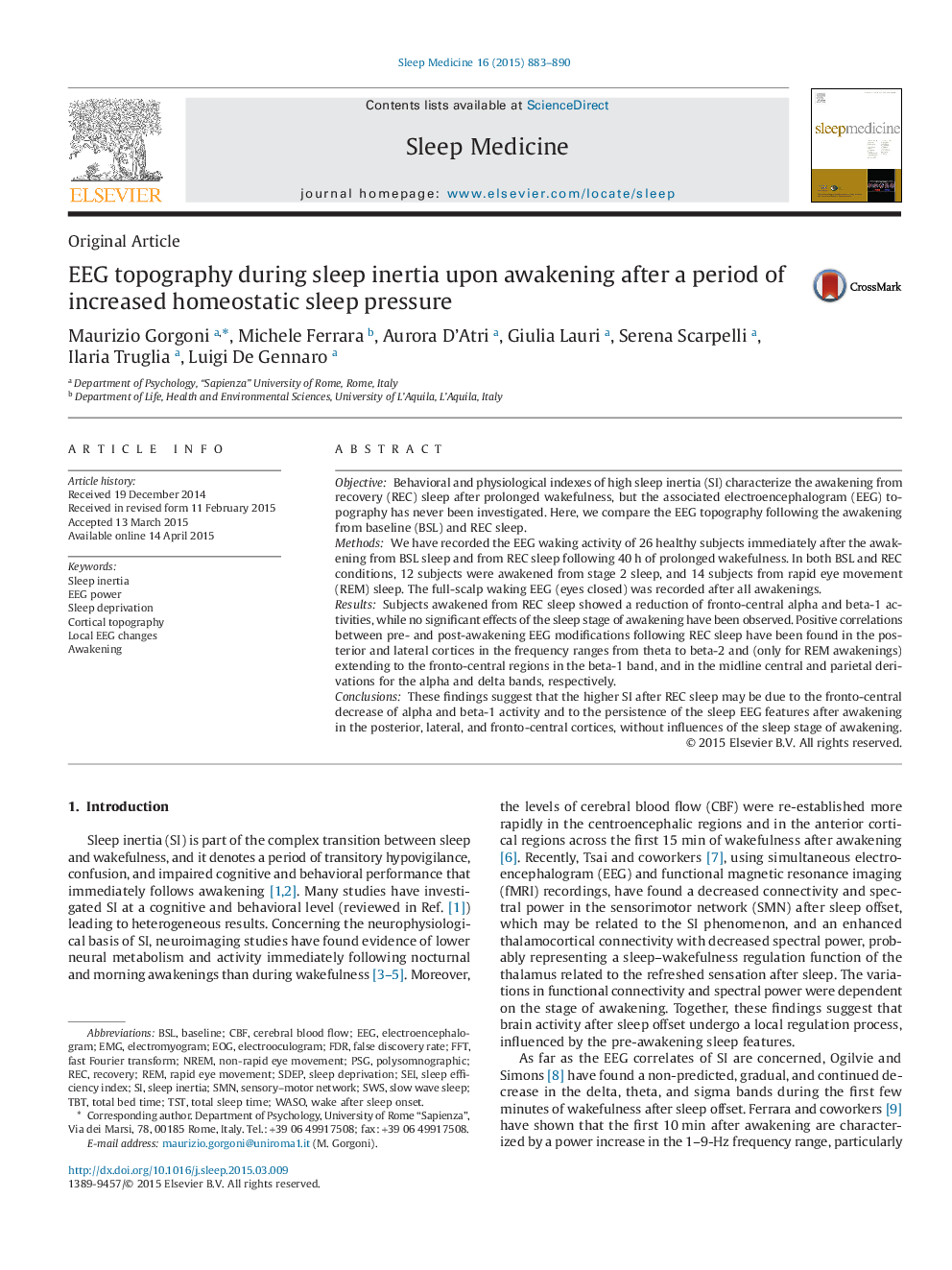| کد مقاله | کد نشریه | سال انتشار | مقاله انگلیسی | نسخه تمام متن |
|---|---|---|---|---|
| 6060688 | 1200235 | 2015 | 8 صفحه PDF | دانلود رایگان |

- Fronto-central alpha and beta-1 electroencephalogram (EEG) activity decrease after recovery sleep offset.
- Rapid eye movement (REM) and stage 2 awakening do not differ regarding post-recovery EEG changes.
- Pre- and post-awakening EEG activity after recovery sleep are positively correlated.
ObjectiveBehavioral and physiological indexes of high sleep inertia (SI) characterize the awakening from recovery (REC) sleep after prolonged wakefulness, but the associated electroencephalogram (EEG) topography has never been investigated. Here, we compare the EEG topography following the awakening from baseline (BSL) and REC sleep.MethodsWe have recorded the EEG waking activity of 26 healthy subjects immediately after the awakening from BSL sleep and from REC sleep following 40âh of prolonged wakefulness. In both BSL and REC conditions, 12 subjects were awakened from stage 2 sleep, and 14 subjects from rapid eye movement (REM) sleep. The full-scalp waking EEG (eyes closed) was recorded after all awakenings.ResultsSubjects awakened from REC sleep showed a reduction of fronto-central alpha and beta-1 activities, while no significant effects of the sleep stage of awakening have been observed. Positive correlations between pre- and post-awakening EEG modifications following REC sleep have been found in the posterior and lateral cortices in the frequency ranges from theta to beta-2 and (only for REM awakenings) extending to the fronto-central regions in the beta-1 band, and in the midline central and parietal derivations for the alpha and delta bands, respectively.ConclusionsThese findings suggest that the higher SI after REC sleep may be due to the fronto-central decrease of alpha and beta-1 activity and to the persistence of the sleep EEG features after awakening in the posterior, lateral, and fronto-central cortices, without influences of the sleep stage of awakening.
Journal: Sleep Medicine - Volume 16, Issue 7, July 2015, Pages 883-890